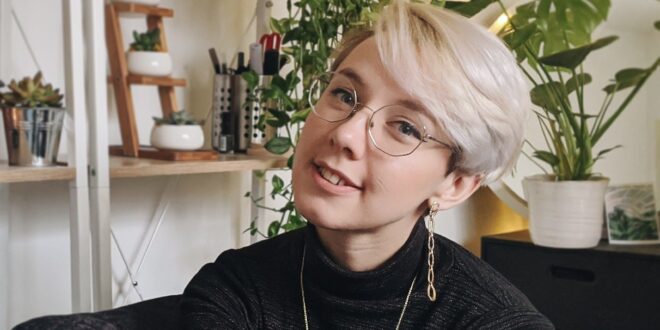Anna Hollinrake, principal artist at Mediatonic talks about her varied role, understanding the messages art can convey and the importance of soft skills
What is your job role and how would you describe your typical day at work?
My title is principal artist, but my role is leading the art side of new game pitches at Mediatonic! I’m primarily a concept artist with experience in art direction and team leadership, and I work directly with designers to develop initial game pitches into full pitch decks. Along the way I’ll often be managing other artists joining the team and making sure everything is running smoothly. It’s my ideal – lots of rapid fire creative decision-making and collaboration, plus organisation and spreadsheets.
With that in mind, there really isn’t a typical day! I’ll meet with the principal creative and creative director each morning to discuss the pitches we’re working on at the moment, usually with me creating imagery to feel out the world, but each pitch is wildly different and needs something new. My main priorities tend to be focusing on gameplay mockups or splash art images. Figuring out art styles is usually very intuitive – I have to trust my gut and go for what feels right!
What qualifications and/or experience do you need to land this job?
Art skills are obviously a key pillar, but there’s a lot of design required as well. It’s a role that requires a lot of different hat wearing – in my six years in industry I’ve done a LOT of often odd but complementary stuff, and that’s helped in my current role a lot because the range of what you work on can be so broad. I studied Game Art, which gave me a solid foundation of art fundamentals, but my experience art directing a 2D animated TV show and working as a 3D environment artist has helped massively too!
I think it’s very important to have an understanding of the messages art can communicate alongside being technically adept, because a huge part of narrative and mood is set within a game’s art style and location. I think it’s easy to get caught up in the many aspects of shaders and programs and lose the visual language and themes that make them so impactful in the first place. Official qualifications are helpful for connections or visas but not necessarily needed – plenty of people get into games from different careers or just through studying at home. I’ve never once been asked for my degree!
If you were interviewing someone for your team, what would you look for?
Once again, art skills – being able to work in a variety of styles or create a range of environments, props and characters is important, as well as being able to present them nicely. Knowledge of 3D is definitely a bonus as it helps hugely with blocking out scenes, which speeds environment iteration up a lot.
Soft skills are important too! High engagement, low commitment – someone who can get very invested in an idea and run with it, but not get too hung up if it doesn’t go ahead. Creating concept art for pitches is always a gamble – it’s exciting but may never see the light of day. Being communicative (and friendly) is vital too – as a concept artist you have to take feedback well, and pitch art is always in flux.

 MCV/DEVELOP News, events, research and jobs from the games industry
MCV/DEVELOP News, events, research and jobs from the games industry




